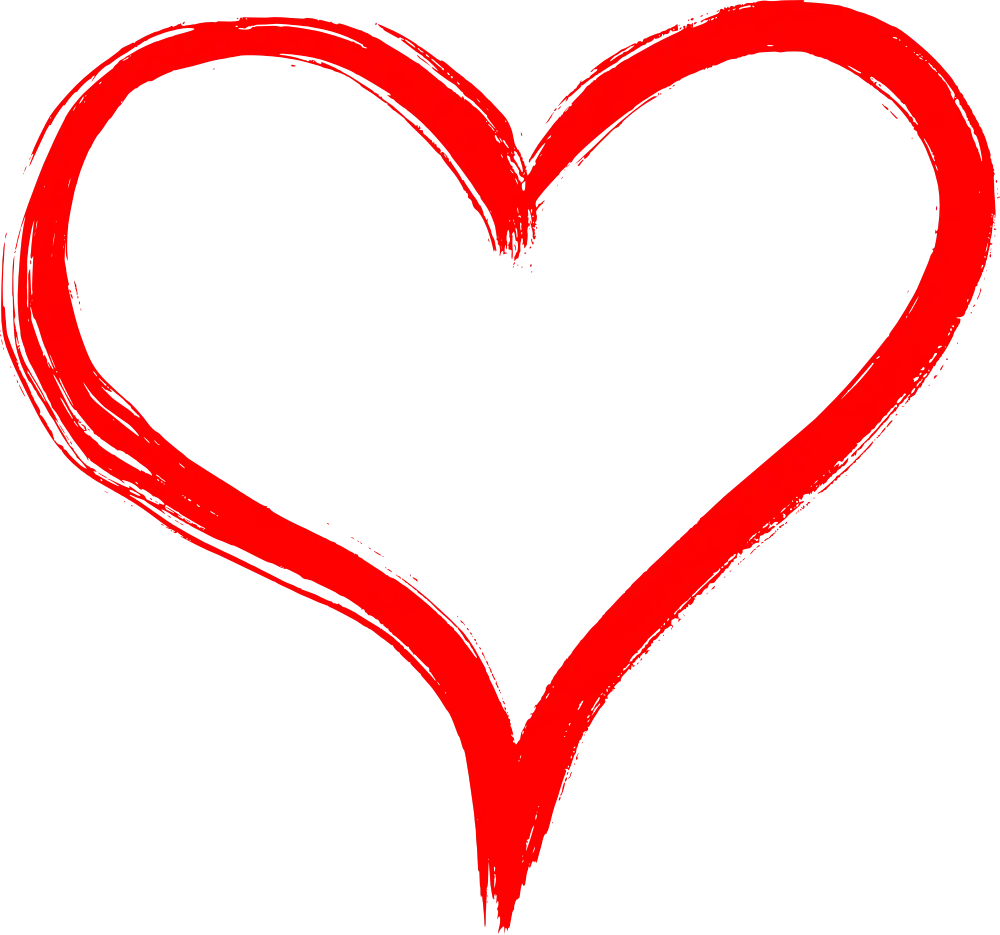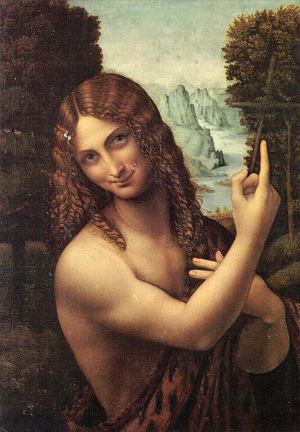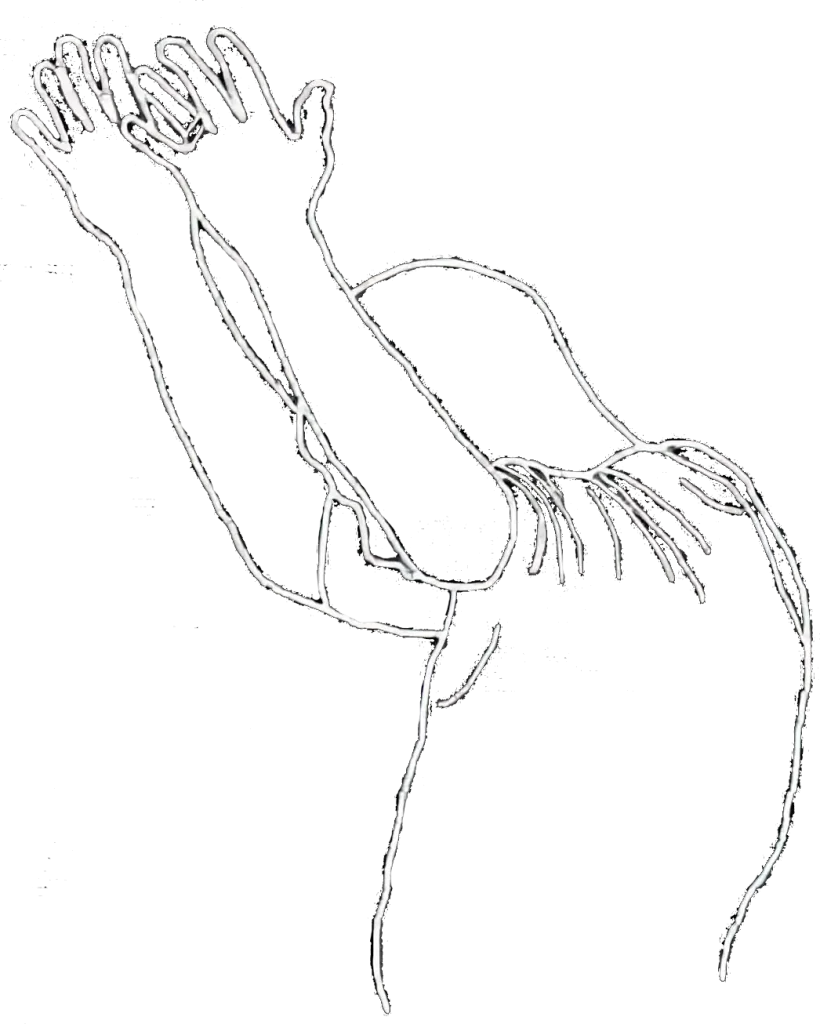
Let them praise His name in the dance.
Psalm 149:3
Last updated: Jan 05, 2025
Corresponding Emotions: Joy & Gratitude
This wing has 14 total flaps (exercises).
Praise is a celebration for God or halleluja— derived from Hebrew hallel (praise) and jah (God). Praise calls attention to His glory. It is to enter into the outer court of the Tabernacle.
8 Flaps
1.1: New Way To Say Thank You
Our knowledge of God is perfected by gratitude: we are thankful and rejoice in the experience of the truth that he is love.
Thomas Merton (1915 – 1968)
Dance a new way to say thank you. The guide will optionally signal with a clave stick or chime after a minute or two to find yet another way to say thank you with the body.
1.2: Body Festival of Praise
This is a subtle movement and detail dance which only appears motionless from a distance after having witnessed The Messiah’s return. Yet the body is actually celebrating lively within. Every cell, especially the muscles and nerves enthusiastically participate in a joyous dance of praise as if engaged in a large festival. On closer inspection, subtle movements such as twitch and vibration can be seen throughout the whole body.
1.3: Becoming-Praise-Banner
We will rejoice in thy salvation and in the name of our God we will set up our banners.
Psalm 20:5
My arms wave like banners of praise to you.
Psalm 63:4
Parts of the body or the entire body become a banner that is being moved by The Holy Spirit to praise, surrender, or signal to The Lord.
Video Clip Example: In the Theokinesis piece A Living Sacrifice from 21:25 to 22:25, the arms become red banners for the Lord.
The following are the colors of the praise banners.
Red
The blood of Jesus (Ephesians 1:7), Atonement (Leviticus 14:52-53), Sacrifice of Christ’s blood (Romans 3:25), Cleansing, Justification, Love (Romans 8:35-36), Consuming fire, Salvation (Joshua 2:18-21).
Pink
Glory, Rose of Sharon, Intimacy, Child-like faith. Tenderness, God’s embrace.
Fuchsia
Joy (Isaiah 55:1; Nehemiah 8:10), Right relationship (Psalm 16:11; 32:11), Communion (Song of Solomon 5:1).
Orange
Lion of Judah (Revelation 5:5), Praise (Ephesians 3:19), Intercession/Warfare, Passion, Power, Fire of God (Ezekiel 1:4; 8:2), Deliverance (Daniel 3:19-29), Fruitfulness, Joy, Warrior (Psalm 97:3).
Yellow
Glory of God (Romans 4:20), Holiness, Eternal Deity, Anointing (Exodus 25:6) Purification (Revelations 3:18).
Green
Life (1 John 2:25), Prosperity (Psalm 92:14), Freshness (Psalm 23:2), At the Throne (Revelation 4:6), Restoration (Psalm 23:2-3), New beginning (Isaiah 27:6 & Romans 6:4), Growth (Genesis 9:3), Health/Vitality (Genesis 1:30).
Blue/Sapphire
Law/Commandments (Numbers 15:38-41), Healing, Heaven (Ezekiel 1:26), Holy Spirit, Priesthood (Exodus 28:31), Grace (Romans 6:14; Hebrew 4:16), Hope, Freedom, Anointing.
Purple
Royalty (Esther 8:15), Kingship (John 19:2), Inheritance, Priesthood, Authority (Ezekiel 27:7).
Bronze/Brass
Forgiveness (Numbers 21:9), Sacrifice (John 3:14-15).
Silver
Redemption (Numbers 18:15-16), Wisdom, Strengthened Faith, Purifier (Psalm 66:10; Malachi 3:3), Word of God (Psalm 12:6).
White
Purity and holiness (Revelation 1:15; Daniel 12:10), Cleanse (Psalm 51:7), Saint (Revelation 3:4), Angels (John 20:12), The Bride of Christ (Revelation 3:4-5), Glory, Light, Holy Spirit (Matthew 3:16).
Opal/Iridescence
Cleansing Work of the Holy Spirit, Transparency.
Black
Mystery of God (Daniel 2:19; 1 Corinthians 2:7), Darkness (Ephesians 5:11), Mourning (Jeremiah 8:21).
Gold
Divinity, Gods Glory (Exodus 37) Praise, Glory and Honor (1 Peter 1:7; Exodus 37; 40:34-35; Revelation 1:13-14), Alter (Genesis 44:8; Exodus 25:10-22; 37:1-6), Majesty (Ester 8:15), Power, Presence.
Brown
Humility (Esther 4:3), People (Isaiah 40:7-8), Earth.
1.4: Manna
When the Israelites saw it, they said to each other, “What is it?” For they did not know what it was. Moses said to them, “It is the bread the Lord has given you to eat.
Exodus 16:15
The bread from God floats down from the sky. Eat it and be nourished by the Lord’s food.
1.5: When All Things Are Beautiful
When the loving soul gazes into the eternal mirror, she says: ‘Lord, between you and me, all things are beautiful.’
St. Mechthild of Magdeburg (1207 – 1294)
God is the creator of both heaven and earth. When we observe the world and its elements pointing to God, we can perceive them as boundless gifts and enduring beauty. Let all things or worlds (qualias) possess golden cords that connect to God.
We dance the present moment, God’s endless gifts—sight, breath, body, air. Bitter things, too, are gifts, even if we do not know why yet.
1.6: Hug World
Enter into a world that consists of endless hugs. To begin, make the gesture with ones arms. One can even hug others. We then incorporate objects around the room and the space in-between. Experiment with the length of the hugs. We can also change the size or quality. Eventually the world and its elements are hugged as they point to the glory of God’s creation.
1.7: Point to The Lord

And whatever you do, whether in word or deed, do it all in the name of the Lord Jesus, giving thanks to God the Father through him.
Colossians 3:17
Point to The Lord as does St. John the Baptist. Move in the space and keep pointing. What else can point? Play around with what else can point to The Lord such as elbow, feet, knees, lips, eyes, and top of head, until one discovers that anywhere in the body, any cell of the body can point to The Lord.
Video Clip Example: In the Theokinesis piece A Living Sacrifice from 8:50 to 9:10, the arms and whole body are pointing up to the lord.
1.8: Shout To the Lord
Shout for joy to God, all the earth!
Psalm 66:1
Give a silent yet embodied shout of joy to the Lord. Shout out, Lord Jesus Christ over and over in different ways.
Blessed Hands
I will praise you as long as I live, and in your name I will lift up my hands.
Psalm 63:4
Orans
The term “orans,” with its roots in Latin, is here the dance of sacred hands or psalm palms. It is a foundational posture of Theokinesis along with prostration. It is the stance of readiness for God. This gesture can be adopted in various positions—standing, seated, or prostrate. The orans is embraced during acts of both praise and worship. The hug is a form of orans.

The ORANS — Offering – Reverence – Adoration -Nearness – Salvation — extends a heartfelt invitation for God to enter for communion. This gesture, deeply rooted in Christian liturgy and iconography, is a symbol of openness, a cup waiting to be filled by the Spirit, much like the Cup of Christ’s blood in the Eucharist, which is both a reminder of sacrifice and a vessel for God’s presence. This cup, open and extended towards heaven expresses the soul ready and willing to be filled with God’s Goodness and Truth.
Orans can simultaneously express: (1) openness for Him; (2) a cup waiting to be filled by Him; (3) holding up a gift for Him; (4) extending embracing arms to Him; (5) lifting Him up; (6) pointing Him out; (7) aligning one’s will to His will.
Regarding point 4, our hug within the orans gives us Harmony, Unity, and Grace (HUG). The hug extends beyond merely human interaction; it is a gesture of love toward God and His Creation—Earth, Heaven, nature, and animals.
In contrast to the same orans shape reemerges the HORNS — Hubris – Oppression – Rivalry – Nihilism – Scorn — connected with the lowly nature of the world, sorcery, and the horns of The Golden Calf—idolatry (of one’s self or the world). This cup is for sins and suffering. Forsake the horns and take in the orans.
6 Flaps
1.9: Orans Improvisation
Begin with a particular orans position that resonates in order to hold it in place. This position is held until the Holy Spirit moves one to dance.
1.10: Walk of Salvation
With orans, walk slowly and gracefully across the floor. The closer one gets to the other end, the closer to God and salvation one gets. Let the body speak.
1.11: Orans Sequence
This is a foundational orans sequence that goes through the high, medium, and low levels of the orans transitioning from standing, sitting, and supinated. Also serves as great core and lower body conditioning.
Video Clip Example: In the Theokinesis piece A Living Sacrifice from 12:33 to 13:12, there is a quadrupedal orans sequence in desperation going from ground level to standing.
1.12: Orans Legs
This is an expansion of the conventional understanding of the orans, extending it to the legs. Consequently, this adaptation can be performed while seated or reclining.
1.13: Whole Body Orans
In a reclined position, both the arms and legs partake in the orans. Furthermore, the entire body can involve itself in a log roll motion from all parts of the torso where the limbs continuously assume various orans positions.
Video Clip Example: In the Theokinesis piece A Living Sacrifice from 14:06 to 14:28, there is a quadrupedal log roll orans.
1.14: Horns to Orans
Investigate what the horns feels like in the body and gradually transform the horns to orans.
Laying of Hands
Outside of the orans, hands can be used for the neighbor as a laying of hands or anointing.
Hands can act as gestures of connection such as handshaking and hugging, etc. See the Spirit page for group or partner work related to touch.